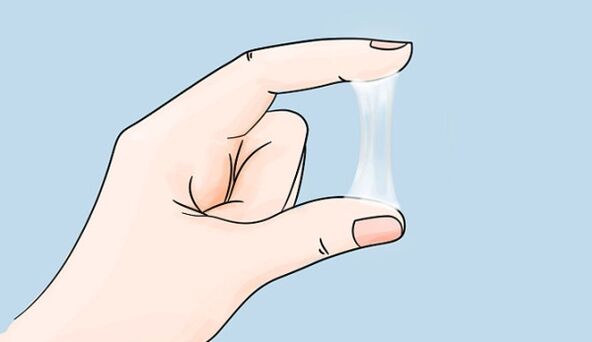Discharge from the genitals of men and women is the norm, but can sometimes speak of disease. Often a pathological discharge becomes a harbinger of sexually transmitted infections.
The discharge in men when they are aroused is called pre-ejaculate. It is secreted by Cooper's urinary glands. Littre’s glands are an additional place to create precum. They secrete mucous fluid. Their number varies and depends on the characteristics of the organism or the duration of abstinence. This secretion contains sperm that can fertilize the egg.
The bulbourethral glands secrete a secretion that moistens the urethra, maintains an alkaline environment and is a favorable environment for sperm to survive as they pass through the urethra.
Pre-ejaculate is also secreted during masturbation, in anticipation of penetration, in the early stages of intercourse.
The function of this secretion is to neutralize the acidic environment in the urethra, which is caused by urine. There is also an acidic environment in the vagina, due to the entry of pre-ejaculate, the environment changes to alkaline, which contributes to the survival of sperm. Another function is the role of lubrication during intimacy.

Discharge in men when aroused is a natural physiological reaction of the body.
Smegma is a physiological discharge from the glands located on the head of the penis. Their number is small. They are removed subject to hygiene and do not cause discomfort. In the absence of hygiene or non-compliance with the rules, smegma accumulates under the foreskin and can lead to inflammatory diseases such as balanoposthitis.
Sperm is secreted in the process of ejaculation, it contains sexual secretion and sperm.
Ejaculation is involuntary ejaculation, usually during sleep, which occurs during puberty or in men who abstain for a long time.
If a man notices that the amount of these secretions and their nature have changed, he should consult a doctor. Pathological discharge in men can be cloudy, gray, yellow, thick, cheesy. Their appearance is accompanied by a burning sensation, pain and discomfort in the urethra.
Normal indicators of male discharge
During arousal, the discharge in men is of individual volume. If a person monitors his health, then he knows his norm.

They are usually transparent, without sharp odors, quite thick and sticky.
Physiologically, the amount of discharge increases with prolonged abstinence from intimacy. In this case, they become thicker and more opaque colors. Distribution rates:
- watery and transparent;
- the smell is not pronounced;
- medium density.
Food, stress, chronic diseases, bad habits can affect the change of secretions.
Rules of intimate hygiene for men:
- Use neutral acid soap.
- Wash your genitals twice a day.
- Rinse the head by pulling the foreskin.
- Avoid overheating the testicles.
- Bedding should be wide and made of natural fabrics.
Female discharge
Discharge in women during arousal is colloquially called lubrication. It has the appearance of a clear, odorless liquid. The fluid is secreted by the epithelial glands of the vagina. It also includes leukocyte cells and microorganisms, which are representatives of the normal microflora of the vagina.
Vaginal secretion is also secreted in a normal state, its amount is up to 5 ml per day. When they are aroused, the amount increases due to the supply of the gonads. Depending on the physiological characteristics of the body, some girls have it more, others less.

Discharge during arousal is a completely normal physiological phenomenon in women.
Thanks to the presence of lubrication, a pleasant penetration of the penis into the vagina is ensured. During ovulation, the composition of vaginal secretions changes to ensure conception.
In addition, the composition of vaginal discharge changes during the menstrual cycle. At the beginning of the cycle they are transparent and watery. Their function at this stage is to protect the mucosa from infection. The closer the ovulation is, the denser they are, they smell like egg white. After ovulation, the amount of discharge decreases, and girls feel dry for days before menstruation.
Normal indicators of vaginal secretions
Discharge rate in women:
- liquid, transparent;
- jelly during ovulation;
- a small amount that increases closer to ovulation and decreases after it;
- faint odor, no unpleasant shade;
- do not irritate the vaginal mucosa or the skin of the external genitalia;
- not accompanied by subjective sensations.
During intercourse, the amount of mucous discharge from the vagina increases - a sign of arousal.
Ejaculation occurs in women at the time of their peak orgasm. It does not contain germ cells like the male ejaculate. It is secreted from glandular tissue located near the urethra. Unlike men, the discovery of such a secret can happen several times during one sexual intercourse. Its quantity is much greater than the quantity of men. The abundance of ejaculate indicates that the woman gets maximum pleasure.
Hygienic rules for normalization of vaginal secretions:
- Use a special soap for intimate hygiene. The composition should contain lactic acid to maintain the acid-base environment in the vagina.
- With a large amount of flushing, daily sanitary pads are used that are changed regularly.
- Wear bedding made of natural fabrics.
- It is recommended to wash twice a day.







































